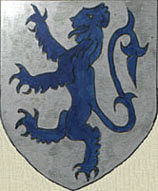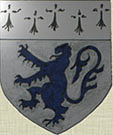 |
SKELTON - IN - CLEVELAND
IN HISTORY
|
 |
"WE WILL REMEMBER THEM"
3405 Cpl BENJAMIN EDMUND NUNN
4th Battalion, Yorkshire Regiment.
Died of wounds, aged 21, on the 25th of September 1916.
Born Skelton in Cleveland. Enlisted at Northallerton, N Yorks.
Son of Robert and Jane Nunn, of 5 Holmebeck Rd, North Skelton, N Yorks.
|
"HE ANSWERED THE CALL - DUTY WELL DONE, HE ENTERED INTO REST"
St Sever Cemetery. Rouen.
|
FAMILY:-
1901. Benjamin, aged 5, was living at 18 William St, North Skelton, where he had been born.
His father, Robert Thomas, aged 35, worked in the Ironstone Mine as a Rolleyman. He had been born at Spennymoor, Co Durham.
His mother, Jane, aged 25, had been born in Rosedale, N Yorks. By 1911 she had had 4 children and 3 were still living.
He had two sisters at that time, Margaret 4 and Lilian 7 mths.
1911. Benjamin, now 15, is a Labourer in the Ironstone Mine. His father is now a Deputy.

|
WAR SITUATION:-
The 4th Battalion, Yorkshire Regiment were part of the 150th Brigade, 50th (Northumbrian) Division.
Benjamin's Medal Card shows that he joined the 4th Yorks Bn at Ypres on the 2nd Oct 1915. Unless he had time out wounded he must have fought with them through all their trials at Ypres in the Winter of 1915/16 and then defending the trenches at Kemmel before being ordered South to join in the struggle on the Somme.
From September 15th the 4th Yorks Battalion had been attacking the German trenches to the North East of Martinpuich in the Battle of Flers Courcelettes, a stage in the continuing Battle of the Somme. Many men had been killed and wounded.
Benjamin Nunn was most likely wounded at this time and taken back via the Casualty Station to one of the Base Hospitals at Rouen, where he died.
Full details can be read starting here.
MEMORIAL:-
During the First World War, Commonwealth camps and hospitals were stationed on the southern outskirts of Rouen.
A base supply depot and the 3rd Echelon of General Headquarters were also established in the city.
Almost all of the hospitals at Rouen remained there for practically the whole of the war.
They included eight general, five stationary, one British Red Cross, one labour hospital, and No. 2 Convalescent Depot.
A number of the dead from these hospitals were buried in other cemeteries, but the great majority were taken to the city cemetery of St. Sever.
|
|